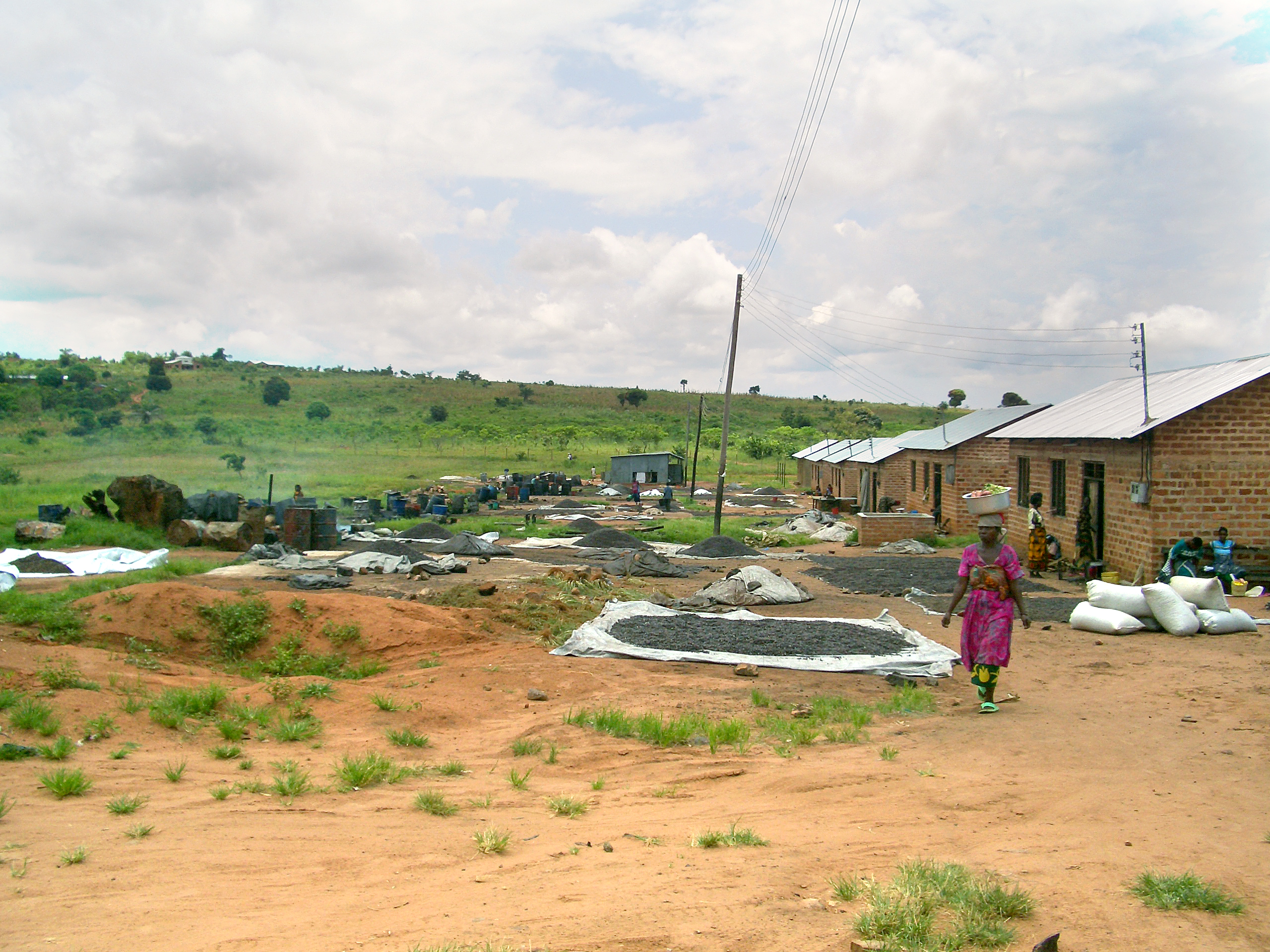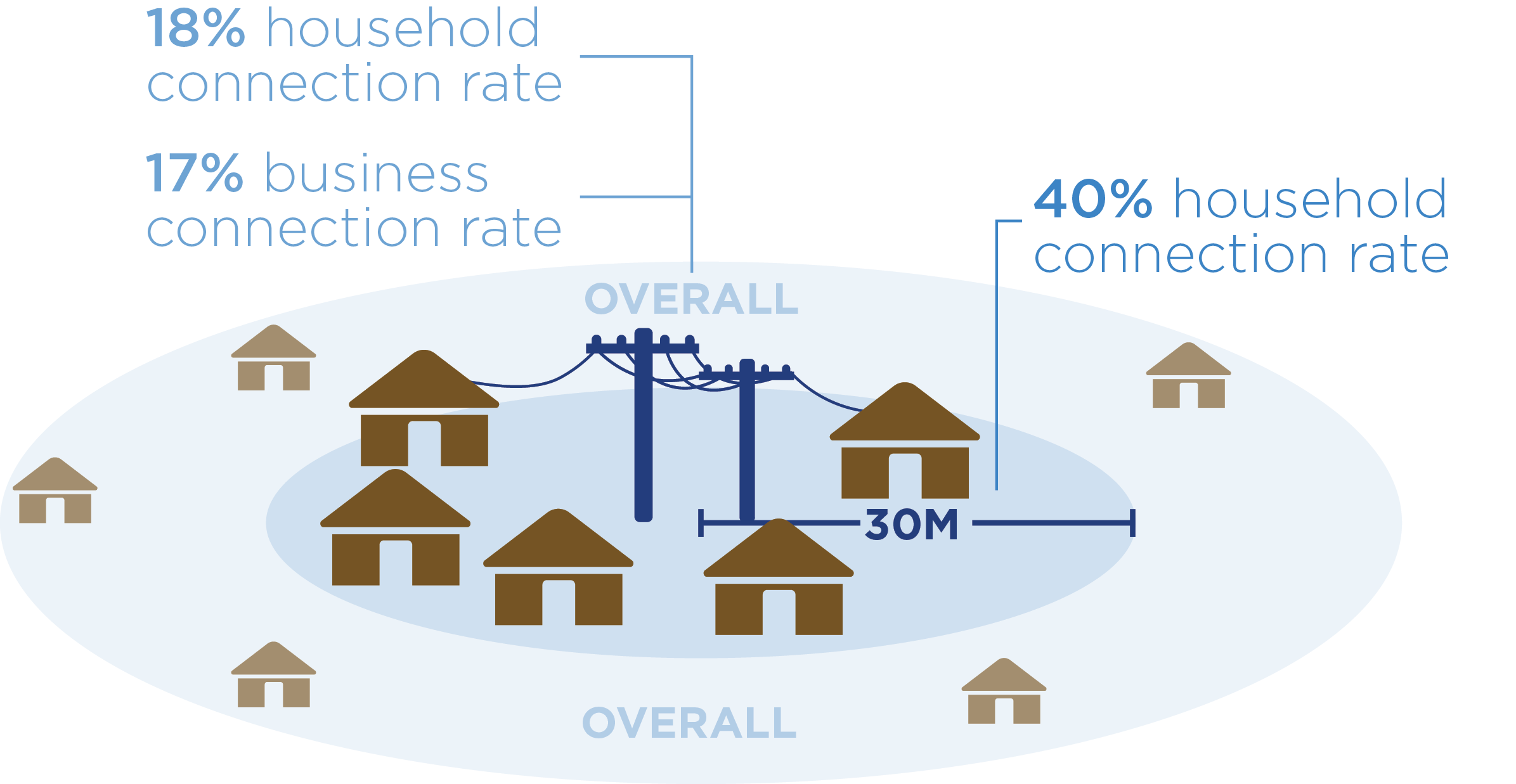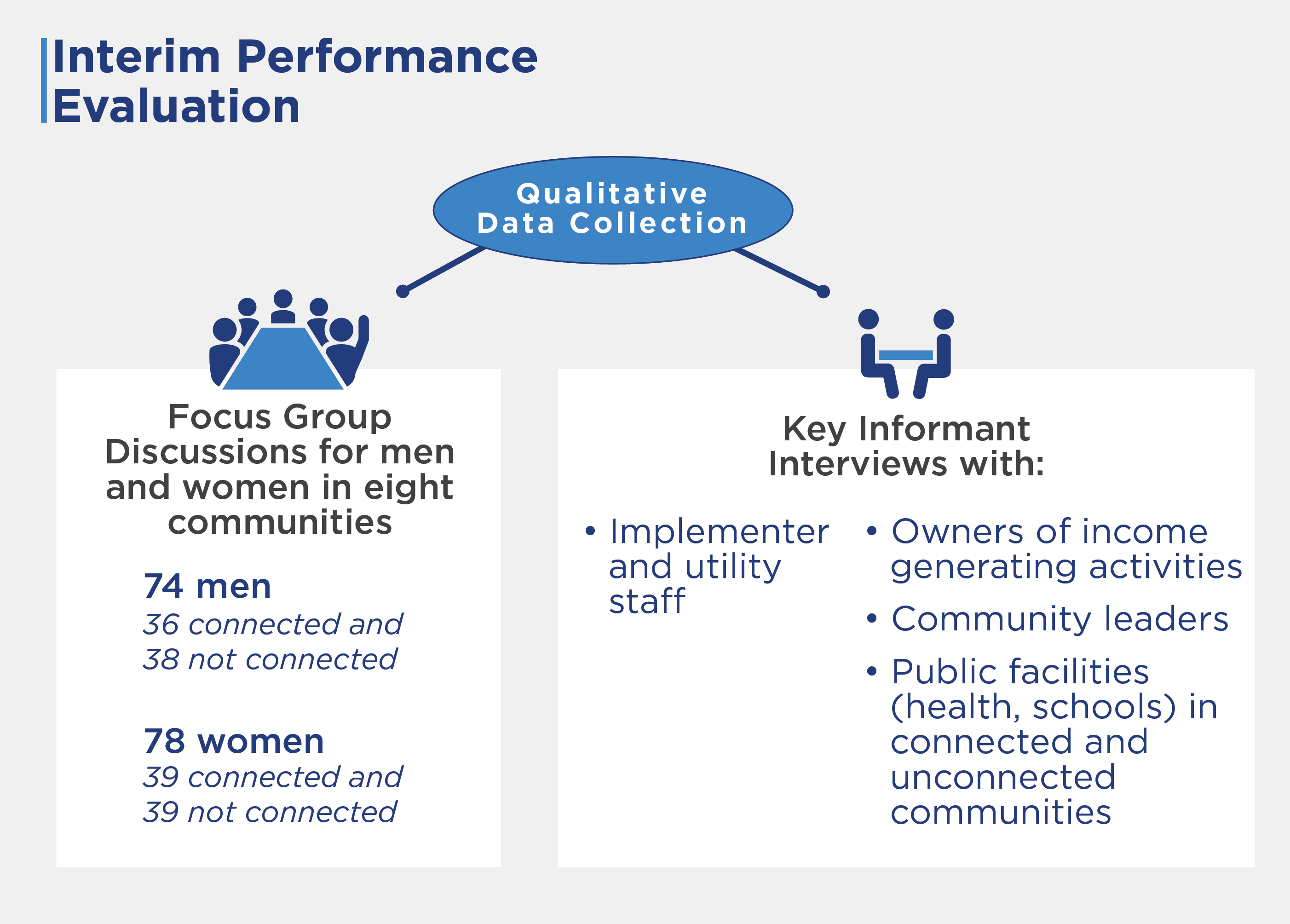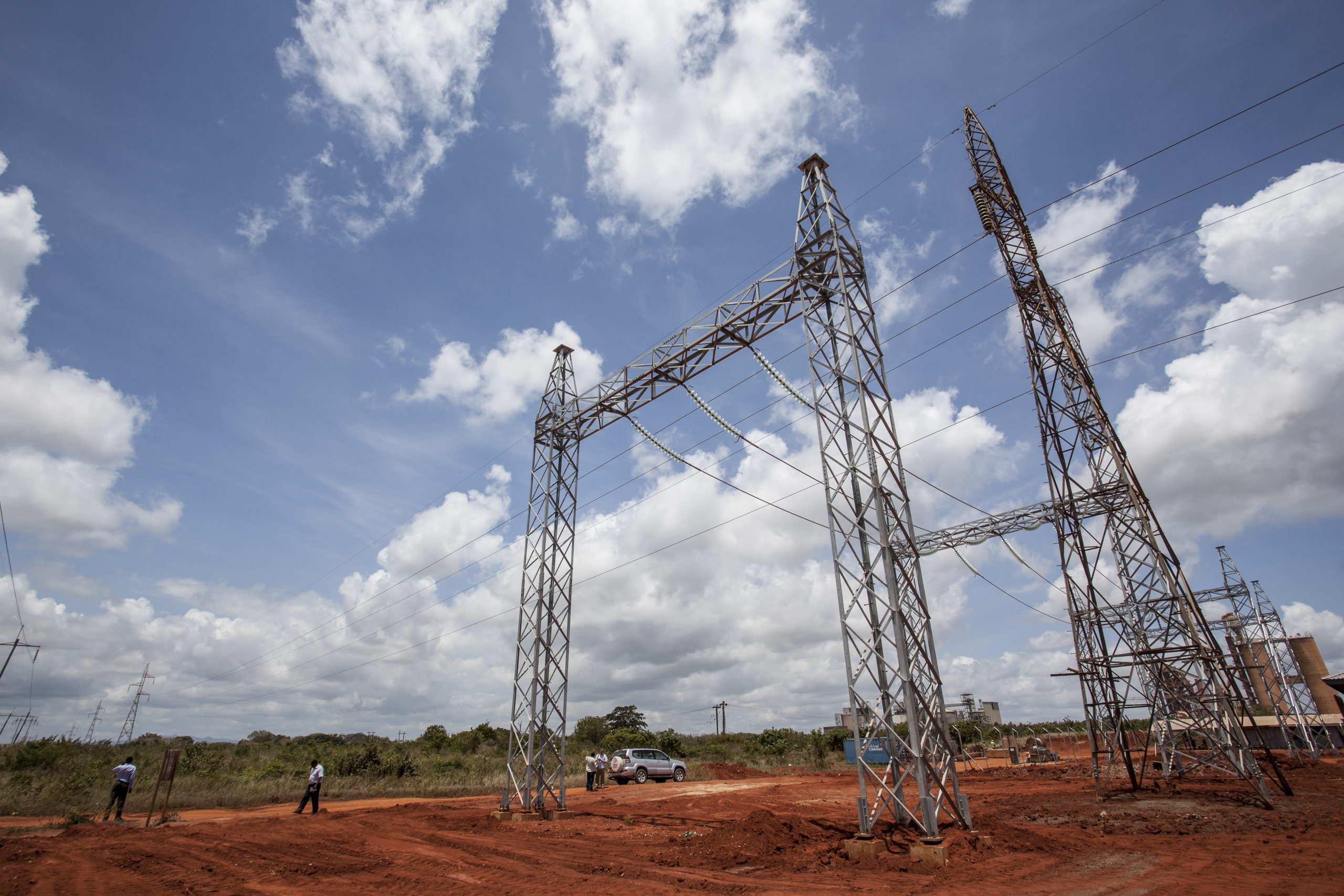Program Overview
MCC’s $694.5 million Tanzania Compact (2008-2013) funded the $199.5 million Energy Sector Project, which included the $124 million Distribution Systems Rehabilitation and Extension (T&D) Activity that extended power lines to increase electricity access. As part of T&D, MCC also funded the financing scheme, which offered a connection fee subsidy in some communities to spur grid connections. The T&D Activity theorized that improved access to and sustained use of lower-cost electricity would produce long-term savings and growth for grid-connected customers in 178 communities across seven regions of Tanzania.
Evaluator Description
MCC commissioned Mathematica Policy Research to conduct an independent interim performance evaluation to inform the overarching impact evaluation of the T&D Activity and the financing scheme. Full report results and learning: https://data.mcc.gov/evaluations/index.php/catalog/50.
Key Findings
Implementation Quality
- The T&D Activity built more than 2,000 km of power lines, but project management challenges affected implementation.
- Insufficient stakeholder engagement resulted in sub-optimal line placement.
Barriers to Connecting to the Grid
- Only an estimated 18 percent of households and 17 percent of businesses had connected to the new lines across study communities.
- Barriers included pole and line placement, technical specifications of the grid infrastructure, connection costs, and the application process. Tariffs or the costs associated with using electricity were not consistently considered barriers.
Electricity Use and Perceived Benefits
Evaluation Questions
This interim performance evaluation was designed to answer the following questions using qualitative data to shed light on intermediate outcomes and to inform the final impact evaluation:
- 1
How well were the T&D Activity and financing scheme implemented? - 2
How did households, businesses, and community institutions decide whether to connect to new electricity lines? - 3
What are the potential impacts of increased access to electricity on economic, education, health, safety, migration, and related outcomes? Do the changes in outcomes from access to electricity differ by gender?
Detailed Findings
Implementation Quality

Power lines in rural Tanzanian community
Power line construction met length targets, but key informants described project management challenges resulting from staff capacity constraints and the lengthy chain of command. Other challenges they described included sub-optimal stakeholder engagement during the design phase that led to changes between the planning and building phases, and problems implementing resettlement and compensation due to weak coordination between key stakeholders. In addition, many respondents were concerned that the lines were not optimally placed within communities. The final design did not consider new communities’ housing and some respondents felt that power lines followed existing roads too rigidly and thus did not extend to reach many households located far from roads.
Respondents identified significant challenges to implementing the financing scheme, which was added to the program to subsidize connection fees to increase connections. Challenges included utility capacity constraints, insufficient communication of the application process to communities, and limited communication among contractors. Even with the subsidy, connection costs and internal wiring costs were still high, and the application period was too short for many households to save enough money to get connected.
Barriers to Connecting to the Grid

Study Communities
Connections to the new lines were low due to barriers, on both the supply and demand sides, that households, businesses, and public facilities experienced in connecting to the grid. Supply-side barriers included pole and line placement outside populated areas, a rule allowing 30 meters as the maximum distance for a basic grid connection, transformer size, utility capacity to serve customers, and material and supply limitations. Demand-side barriers included application, connection and internal wiring costs, the multi-step application process, extended wait times, housing materials not suitable for electric connections, and the season when connections were offered. An estimated 40 percent of households within 30 meters of the new lines connected to the gird, versus 18 percent overall, demonstrating the importance of line placement.
Respondents had varying views on the relationship between usage costs and demand for electricity connections. Some suggested that electricity was cheaper than other sources of energy, such as kerosene or diesel. Those who relied on more basic energy sources (such as candles and batteries), before electrification struggled to afford their energy bills after electrification, especially if they tried to use certain types of high-consumption appliances like refrigerators, stoves, and irons. Some respondents expressed distrust of the utility because they had not realized that they would have to pay a monthly fee for electricity in addition to the units of electricity they consume.
Electricity Use and Perceived Benefits
Respondents reported using electricity widely at home and for business purposes and described how electricity benefited communities, schools, and health care facilities. Electricity enabled business owners to expand and enhance businesses by staying open later and offering more types of merchandise. Electricity also enabled household members to have regular, low-cost lighting, use small appliances, save time on chores, and allowed them to charge cell phones at home instead of having to walk to a store or kiosk. Few respondents reported using electricity for cooking, and others suggested that other energy sources (such as charcoal and firewood) were more affordable than electric hot plates. Refrigeration was mentioned as important for storing vaccines and medicines and for business and social uses like cooling drinks and storing food.
Additional benefits noted were increased hours for study in the evening, increased family communication, enhanced ability of health workers to serve patients at night, reduced crime, improved safety by protecting people from snakes, and reduced likelihood of fires by replacing candles and kerosene lamps. Respondents felt that electricity improved the status of communities by making them more attractive to businesses, improving safety through more lighting, and giving people the sense that their community is important.
Respondent reactions to the benefits of electrification by gender were mixed. Most female respondents agreed that women benefited the most from electricity in the home, which made household chores easier (for example, using electric water heaters or not having to wait in line or walk far to purchase kerosene), and allowed them to complete chores at different times of the day. Men also mentioned benefiting from the ability to watch a TV show or games at home, whereas all would benefit from greater awareness about domestic and world affairs by watching or listening to the news. Both boys and girls enrolled in school were expected to benefit from electricity equally. Health facilities expected to benefit all who need care, but particularly pregnant women and children.
MCC Learning
Local stakeholders should be included in the decisions regarding the placement of new power lines, and community members should be informed about final line placement decisions.
Implementers should ensure they have adequate materials to accommodate large numbers of new customers after construction and when implementing new programs such as the financing scheme.
A strong outreach program is important to inform communities about the connection process and financing schemes to ensure a good understanding of the costs and benefits of electricity, the application process and deadlines, and general procedures.
Evaluation Methods

This interim performance evaluation built on the baseline data collected in late 2011. Its objective was to offer insights into program implementation and perceptions about intermediate outcomes to help inform the evaluation’s final impact analysis. It relied on qualitative data collection, observational analysis, and a review of implementation documents. Data collection occurred from June to September 2014, 8-12 months after the T&D Activity ended in eight T&D project communities, two each from Mwanza, Dodoma, Iringa, and Tanga. The study sample focused on intervention communities where MCC-funded lines had been built, that varied on key characteristics (including rural or urban status and those offered and not offered the financing scheme), and that had connected and not connected households. Primary data was collected through focus group discussions and key informant interviews.
Next Steps
The final impact evaluation covering the full set of evaluation questions will be conducted in 2015 and results will be available in 2016.
2021-002-2564


